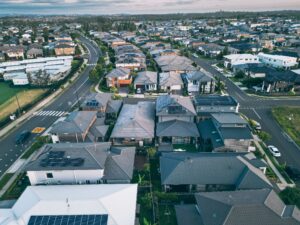Airtasker Launches Investor Hub Amid Media Push—Is It Gearing Up for Scale?

The ASX-listed company Airtasker Ltd (ASX: ART) has recently made two significant announcements that suggest a shift in corporate momentum: the launch of its new Investor Hub and the expansion of its media-capital partnerships in the UK. These developments warrant closer examination from an investor’s perspective because they reflect strategy, execution and potential scaling. The key question is: Is Airtasker simply polishing its communications, or is the business genuinely preparing to scale?
What are the Best ASX stocks to invest in right now?
Check our buy/sell tips

Launch of the Investor Hub
On 27 August 2025, Airtasker announced via the ASX the launch of its new Investor Hub, providing centralised access to corporate and financial updates. The new portal provides a centralised location for investors to access ASX announcements, annual and half-yearly reports, investor presentations, shareholder information and a reporting calendar. The creation of this hub signals a step-up in corporate investor communications and transparency.
For investors, this improved access to reliable, timely information matters. When a company enhances its investor engagement infrastructure, it reduces information asymmetry and supports wider participation from both institutional and retail shareholders. In Airtasker’s case, the hub could help build confidence in management’s commitment to governance and disclosure.
Airtasker’s FY25 results release included a reference to the new Investor Hub and directed shareholders to visit it for ongoing management updates and company announcements. This suggests the hub is not just a cosmetic tool but a key part of the investor relations strategy.
Media-Capital Investment in the UK Market
Airtasker has executed a follow-on media-for-equity (or “media-capital”) arrangement with 4 Ventures, the venture arm of UK broadcaster Channel 4 Television Corporation. On 8 October 2025, Airtasker announced that Channel 4’s venture arm, 4 Ventures, would provide £2.5 million (about A$5.1 million) in media inventory through a convertible investment structure in its UK subsidiary. This marks the third such arrangement between Airtasker and Channel 4 since 2023.
Key terms: Airtasker UK may repay the principal plus a 5% annual coupon at maturity in October 2027, or 4 Ventures may elect to convert into equity at a 10% discount to the next agreed valuation. The UK business achieved a gross marketplace volume (GMV) annualised run rate (ARR) of A$21.0 million as at 30 June 2025, and its revenue increased by 111% year-on-year to £1.4 million (about A$2.9 million).
This kind of arrangement offers key strategic benefits: brand-building via media spend without large upfront cash outlays, alignment of partner incentives, and support for international growth. For a marketplace business such as Airtasker, strong brand awareness in new geographies translates into both demand-side growth (task demand, customer acquisition) and supply-side depth (Taskers in platform terms). The UK growth metrics suggest the strategy is starting to show traction.
Financial and Operational Snapshot
Airtasker’s FY25 full-year results showed total group revenue of A$52.6 million, a 12.8% increase compared with FY24. Gross Marketplace Volume (GMV) rose 9.5% year on year to A$208.7 million, reversing a 3.5% decline recorded in FY24. Monetisation rate improved to 21.6% (versus 20.0% in FY24), reflecting better yield per transaction.
In Australia alone, revenue grew 13.4% to A$41.6 million and GMV rose 5.3% to A$190.8 million, supported by the brand-investment strategy and media partnerships. The Australian marketplace generated ~A$15.2 million in cash flow after covering global head-office costs, demonstrating operating leverage. Globally, Airtasker recorded a free cash flow of A$1.2 million for FY25. As of 30 June 2025, Airtasker held A$19.1 million in cash and term deposits and A$27.9 million in prepaid media assets from media-capital partners, according to its FY25 financial report.
The business appears to have a stronger financial footing than in many earlier years. Improved monetisation and positive free cash flow are encouraging signs, though sustaining scale and profitability remain Airtasker’s key challenge.
Why These Moves Matter from an Investment Perspective
Several strategic levers are embedded in these announcements, which warrant investor focus:
1. Enhanced transparency and investor access
The Investor Hub aligns Airtasker with best-practice investor relations, helping broaden investor participation and reducing information gaps. For listed platform businesses, perception and narrative contribute significantly to valuation multiples.
2. Brand and network-effect leverage
As a two-sided marketplace connecting service buyers and Taskers, Airtasker’s value accelerates when demand and supply scale and reinforce one another. The UK media investment and brand drive in Australia indicate a push to build that ecosystem momentum.
3. Capital-efficient growth
By obtaining media inventory via convertible structures rather than pure cash advertising, Airtasker reduces upfront cash burn while still investing in growth. That preserves strategic optionality and may reduce financing risk.
4. International expansion ambition
Australia remains the domestic base, but the UK (and increasingly the US) represents high-potential growth arenas. The UK GMV run-rate of ~A$21 million and 111% revenue growth highlight that international traction is emerging.
5. Signalling execution phase
The coincident timing of the investor-hub launch and expanded media-capital deal suggests the company is signalling a transition to a “growth scaling” phase rather than simply maintaining existing operations. For investors, meaning lies in execution rather than intent.
Risks and What to Monitor
Despite the encouraging signs, several risk factors remain, and monitoring them is crucial for an informed investment stance.
Execution risk in new markets
International expansion – especially in the UK and US – brings heightened competition, cost inflation, regulatory variation and local nuances. Growth in brand recognition does not automatically translate to sustainable economics. The UK deal is promising, but the scale regarding total GMV remains modest in the global context.
Monetisation and margin pressure
GMV growth is meaningful, but converting that into higher monetisation, better margins, and ultimately positive net profit remains the hurdle. While the monetisation rate improved to 21.6%, the company remains loss-making on a net-profit basis. Cost discipline, especially in overseas markets, will be key.
Dilution risk from convertible or equity-linked deals
Media-capital arrangements often include conversion options or equity stakes that may dilute existing shareholders. The terms of Channel 4’s investment in Airtasker UK include a conversion option and a repurchase obligation. Investors will need clarity on how much dilution may occur and how repurchases will be funded.
Brand investment pay-off lag
Brand awareness takes time to translate into task volumes, retention, pricing power and eventually margin. If the uplift in brand does not lead to operational uplift, the investment may not deliver expected returns in the near term.
Cash flow and capital allocation
Although free cash flow is positive, the amount is modest (~A$1.2 million). Scaling growth will likely require incremental investment; the company must manage this without eroding financial flexibility.
Key Catalysts to Watch
Investors should keep an eye on several upcoming metrics and events to assess whether Airtasker is realising the potential implied by recent moves.
Revenue growth acceleration in international markets (UK, US) and meaningful improvement in their contribution to the group result.
Improvement in net margin, reduction in net loss or movement to net profitability.
Task-volume growth, Tasker recruitment/retention metrics and customer-retention trends brand drivetrack the depth of network effect.
Clarity from management regarding the funding of media capital deals, conversion or dilution terms, and repurchase obligations of partner equity.
Brand-awareness metrics are improving in new markets (e.g., UK, US) and are observable in customer acquisition cost or yield per task.
Guidance for FY26 and beyond, showing a clear path to scale and a framework for achieving profitability or positive contribution from overseas operations.
In the FY25 results release, Airtasker guided that the Australian marketplace would target solid double-digit revenue growth, and that the UK and US markets would “accelerate growth trajectory” while utilising the A$27.9 million in prepaid media assets. Investors should check actual progress against these targets.
Platform and Market-Dynamics Context
Airtasker operates a “task-marketplace” connecting service providers (Taskers) with people or businesses needing tasks done. The platform-economy model thrives on scale: as more Taskers join, customers see higher availability and better pricing; as more tasks are posted, Taskers find more opportunities and are incentivised to stay. Brand and awareness matter especially when entering new geographies, because trust and recognition accelerate onboarding.
In Australia, Airtasker has leveraged brand partnerships (such as with oOh!media and ARN) to drive a reported 15% uplift in unprompted brand awareness and re-accelerate revenue growth in FY25. In the UK, the partnership with Channel 4 via 4 Ventures is intended to deliver a similar brand awareness and network-effect kickstart. The strategy is logical: invest in brand now so that future task volumes scale organically.
However, platform-business scaling is not guaranteed. Local competitors, regulatory dynamics, localisation costs and diverging consumer behaviour all pose challenges. Thus, while Airtasker’s moves are strategically aligned, execution discipline will determine whether the platform achieves durable scale.
Conclusion
Airtasker’s creation of its Investor Hub and the expanded media-capital partnership with Channel 4’s 4 Ventures are distinct signals of intention. They suggest that Airtasker is preparing for scale rather than merely maintaining its domestic footing. The underlying financials, revenue growth, improved monetisation, positive free cash flow, and emerging traction internationally provide a solid baseline.
The real test now lies in execution: converting brand investment into meaningful growth, improving margins, navigating international expansion and managing dilution risks. For investors, monitoring task-volume metrics, brand-awareness lift, monetisation trends, and guidance versus actuals will be crucial.
In summary, Airtasker appears to be gearing up for its next growth chapter. The potential reward is meaningful, but so too is the execution risk. The next few reporting cycles will be decisive for evaluating whether the company transitions from growth-promising to growth-delivering.
FAQs
- What is the Investor Hub?
It is the centralised investor-relations web portal launched by Airtasker in August 2025, designed to provide shareholders and analysts with easy access to ASX announcements, financial results, investor presentations and company updates.
- What is a media-for-equity or media-capital deal?
This is a structure whereby a company receives media inventory (advertising spend, airtime) in return for equity, convertible debentures or similar instruments, instead of purely cash advertising expenses. Airtasker’s deal with 4 Ventures is a case in point – £2.5 million in media inventory in return for convertible exposure.
- Is Airtasker profitable now?
No. While revenue is growing and free cash flow was positive (A$1.2 million for FY25), Airtasker recorded a net loss after tax of A$37.7 million (Group) and A$31.6 million attributable to shareholders.
- What are the most significant risks?
Major risks include execution failure in scaling internationally, brand investment that does not convert into operational growth, monetisation and margin pressure, and dilution arising from convertible deals or equity issuance.
- What would represent a successful next phase?
A successful next phase would deliver double-digit revenue growth in international markets, improved monetisation and margins, narrowing of losses (ideally moving towards profitability), and clear evidence of network-effect acceleration (higher task volumes, stronger retention, more Taskers).
Blog Categories
Get Our Top 5 ASX Stocks for FY26
Recent Posts
Diversifying Portfolios with ASX Consumer Stocks: Opportunities and Risks
The ASX 200 has delivered significant volatility recently, and market participants observing the screens in 2025 understand the turbulence firsthand.…
Is Lendlease (ASX:LLC) out of the doldrums for good?
Lendlease (ASX:LLC) has for the past several years been the classic definition of a ‘value trap’. You think a good…
Here are the 2 most important stock market taxes that investors need to be aware on
As one of two certainties in life, investors need to be aware of stock market taxes. Investors may be liable…


